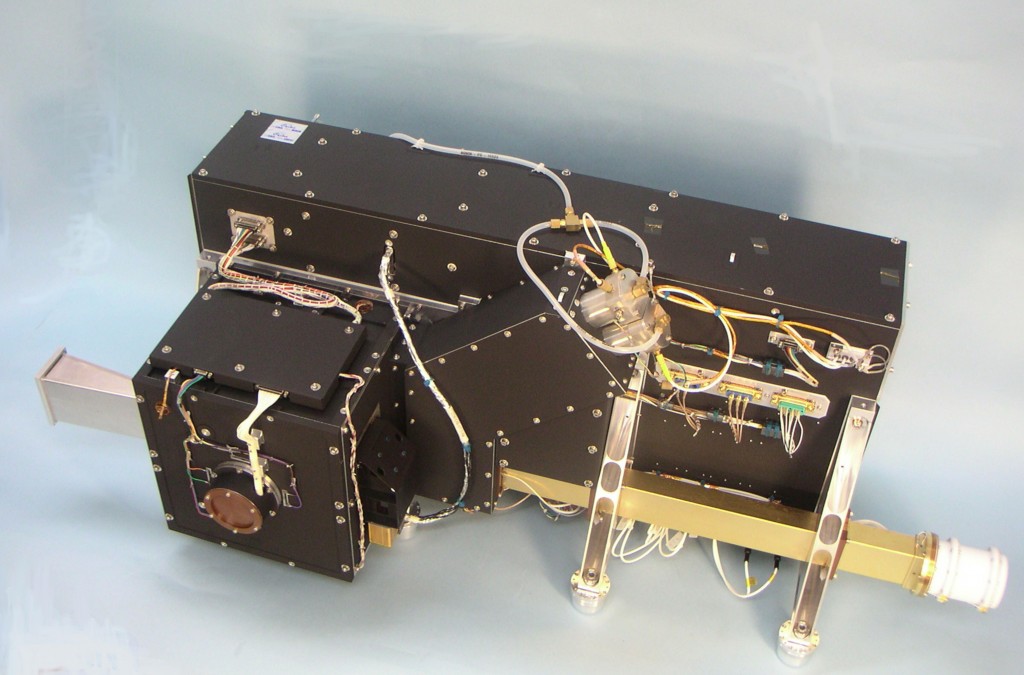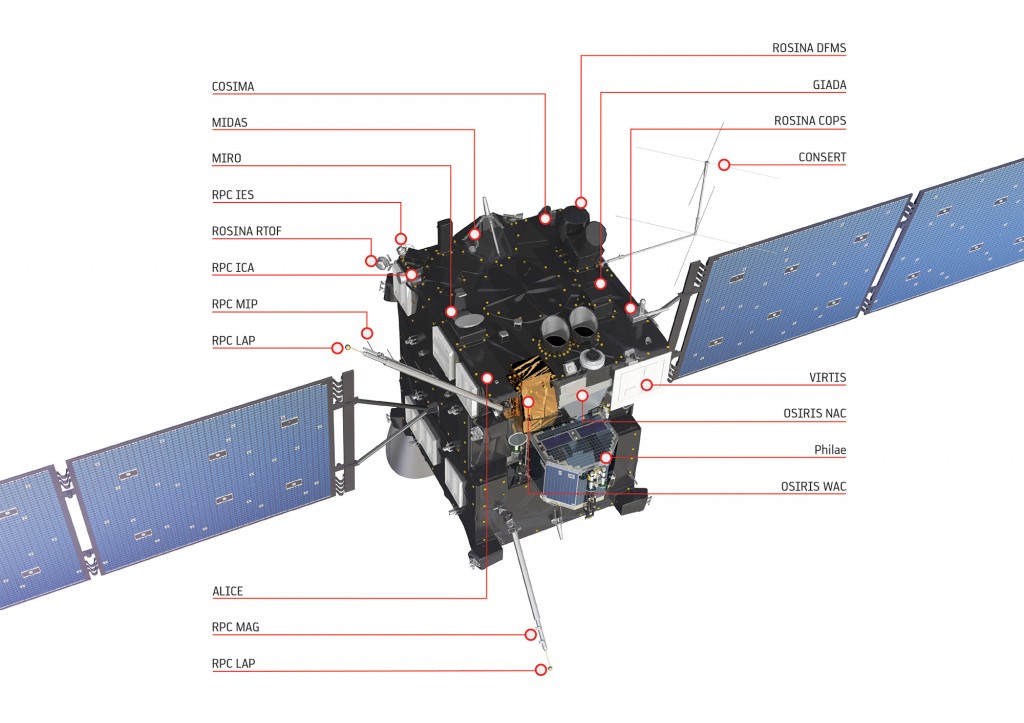COSIMA, the COmetary Secondary Ion Mass Analyser, will collect dust grains from comet 67P/Churyumov-Gerasimenko and analyse their chemistry. Martin Hilchenbach, Principal Investigator for COSIMA, introduces the instrument and describes some of the first commissioning activities.
We are very pleased that COSIMA was successfully reactivated at the end of March, with everything working fine. We are now ready for the second phase of the commissioning in July and the first cometary dust collection in the inner coma of the comet from the end of August onward.
Unlike in previous comet flyby missions such as Giotto or Stardust, COSIMA will analyse cometary grains impacting on targets with relative low velocity of up to 100 m/s (360 km/h). Comparing that to a walking pedestrian busy with his or her smartphone and accidentally smashing into a lamp post at about 1.5 m/s (5.4 km/h), this is still a lot! But in the previous comet flybys, the relative velocities of the spacecraft and the dust grains were 5 to 70 km/s (18 000 to 252 000 km/h).
Part of the energy of the impact between dust grain and instrument target is transformed into heat, but it is unclear to what extent this alters the cometary grains. For COSIMA, even if all of the kinetic energy from the impact was transformed into heat, the grains would only heat up by about 5°C. We are therefore optimistic to collect pristine cometary matter, but even so, a room temperature environment is also a pretty tough environment for icy grains caught on flight. The crashed grains will be identified in the snapshots of the COSIMA microscope and selected grains will be analysed with the secondary ion mass spectrometer to reveal the composition of the grains, which will tell us about the composition of the primordial matter from the early Solar System. Presently, we only have experienced this scenario in our laboratory environment, but from the end of August onwards, we are looking forward to studying this for real.
During this first commissioning phase I realised again, how impressive the flexibility of ESA and the COSIMA team is: one can adapt the flight software of an instrument built more than 10 years ago to new tasks in a very professional way. The only prerequisite are thorough tests with the COSIMA ground reference model to catch even very minor bugs in the instrument’s new flight software, well in advance. After all, we do not want to report on the detection of a software bug just in time for Philae’s landing on the comet nucleus in November.
Early in April we uploaded this new software, and after switching the COSIMA instrument off and then back on, our previous tests proved successful and COSIMA was up and running with a fresh memory. All that takes a lot of time, not only the preparation of operation tasks mentioned already, but the travel time of the telemetry data. On their way to or from the spacecraft these data travel about 40 minutes through the inner Solar System. Therefore we had to be quite patient in these last days and there was no way for last minute reshuffling as we were used to from our daily laboratory work.
On the other hand, for possible future space missions to comets, we can dream about 3D printers that could even add new functionalities to the instrument hardware – and not just to the software!
But for the Rosetta mission to comet 67P/CG, COSIMA is well equipped for the tasks to come.











Discussion: 3 comments
Nice post! As a SE student I wonder who’s coding the new software? Not sure if Software Engineers do have the specific knowledge about this very speciallized piece of hardware. But then again if the scientists wrote code,.. well it tends to look and behave funny 😀
I do 🙂
I have M.Sc. in geophysics, which helps me to understand the scientific requirements. But I turned quite early in my career to programming.
First parts of the COSIMA code were written over 15 years ago, last changes were made in January. The code is a mixture of Assembly, C and Forth. I can agree, that it looks funny.
Assembly and Forth sounds like a lot of work to me 😀 15 years ago, thats a long time wow!
Don’t get me wrong, I have complete confidence that you guys do a great job setting up and using all instruments. Looking forward to more news here!